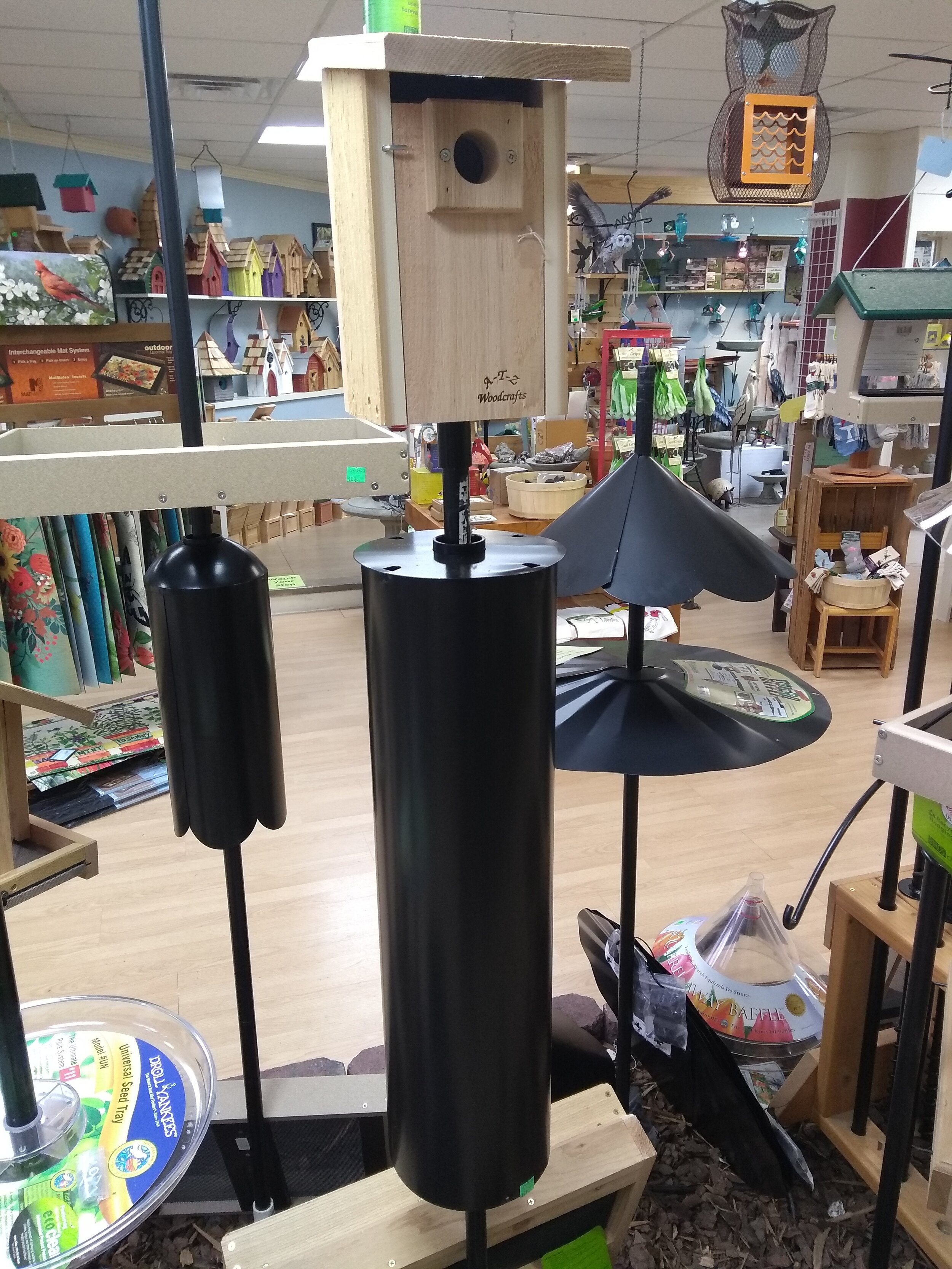Carolina Wrens Quirky Nest Locations
It is hard to believe given the recent winter weather but presently you may see evidence of certain birds beginning the nesting process. For weeks now I have been hearing Cardinals singing, as well as Chickadees, Titmice, Bluebirds, and Carolina Wrens.
The Carolina Wren is one of the earliest nesting birds you should be aware of and be prepared for its quirky choices of nesting locations around the house. Carolina Wrens are notorious for choosing to nest in what seems to us to be terrible and dangerous locations. But their beautifully crafted nest can be so well concealed that you only accidentally discover it while doing a little spring cleaning. Their nest is an expertly engineered “cave” made from long thin pieces of root, a little moss, and lots of lacey skeletonized leaves intertwined where the eggs will be laid deep within.
Hopefully, by pointing this out now you may be able to discourage one from nesting in a location that will be quite the inconvenience for you later.
Here is a list of actual nesting locations we have either experienced or encountered with customers: A wreath on the front door, open mailbox, on a shelf in the garage or garden shed, under the hood of an old vehicle that’s been sitting for a while, upside down canoe, bicycle helmet hanging on a wall, in a hanging plastic shopping bag, behind pillows on an outdoor couch, in a potted plant on the porch, on a hanging ladder, in a covered boat, in a gas or charcoal grill, and in the folds of a hammock to name a few.
If you have experienced something like this in the past get ahead of it now to avoid the unpleasantness of having to relocate a nest, which rarely works. Avoid leaving a window or door open on your garage or shed because these inquisitive little birds will and do quite expertly find their way in and out of small places and openings. At the store during the spring months, we sometimes leave the backdoor open to let in the fresh air. We have seen in just a few hours a Carolina Wren discover an empty box on a shelf and promptly begin nest building. It can happen that fast. You may think to put up a birdhouse for them out in the yard somewhere but that usually does not work. Carolina Wrens want to be close to the cover and protection of your house, or some large object. I have had success with Carolina Wrens in a birdhouse, but it was placed on the wall of my covered porch just a few feet from my backdoor.
If you discover a Carolina Wren nest with eggs or babies in an unwanted place, please consider letting them finish and allow the babies to fledge. Wren babies leave the nest quickly, sometimes less than two weeks after hatching.
Bluebirds Searching for Nest Sites
Bluebirds are now singing and exhibiting courtship behaviors. Listen for the sweet call and the male wing waving as he sits on a nest box or near-by perch to court a female. Although bluebirds are going through the motions of courtship relatively few will get on nest in the month of March. Sure, there are always a few eager pairs, but the majority seem to wait until early to mid-April. There is plenty of time to still offer a nest box in your yard and attract Bluebirds this spring and summer. Bluebird numbers are great and its easier than ever to attract them with a nest box. Rather than duplicate our “Bluebird Handout” in the store with all the nest box placement tips and suggestions I would prefer to dispel a few myths instead. We frequently encounter customers who are under the impression one must have the perfect situation to attract Bluebirds. Bluebirds are quite good at adapting and the very fact they use nest boxes made by man illustrates this.
· Nest-boxes must face east. Not true. Facing it east is suggested only because the entrance hole would be away from prevailing weather patterns. Good idea but not necessary. My most successful box over the years has faced northwest.
· The nest box must be in a big clearing. Bluebirds are at times of the year a “field and meadow” type of bird which may be what led to this myth. The fact is fields and meadows never provided Bluebirds with nest sites so they would leave those areas in the spring to look for them in more wooded areas where secondary cavities (abandoned woodpecker holes) were available. Simply choose the most open space you have even if there are trees around. My yard is surrounded by forest, yet Bluebirds use one or two of the boxes I provide every year.
· You have to offer mealworms to attract Bluebirds. Absolutely not the case. The nest box is the most important part of the process in attracting Bluebirds. Feeding them is enjoyable and in periods of several days in a row of spring rains and very cool temperatures feeding them live mealworms can help them significantly, especially as the young grow and demand more food.
Announcement about Curbside Service
Curbside service is available Monday Through Friday ONLY. Saturday is our busiest day of the week with in-store customers requiring more help and consultation. Please understand we cannot efficiently attend to our in-store customers and fulfill orders being called in from the curb. You may still place an order by Friday for Saturday pick-up but we cannot process orders called in on Saturday. Thank you, we appreciate your cooperation.


